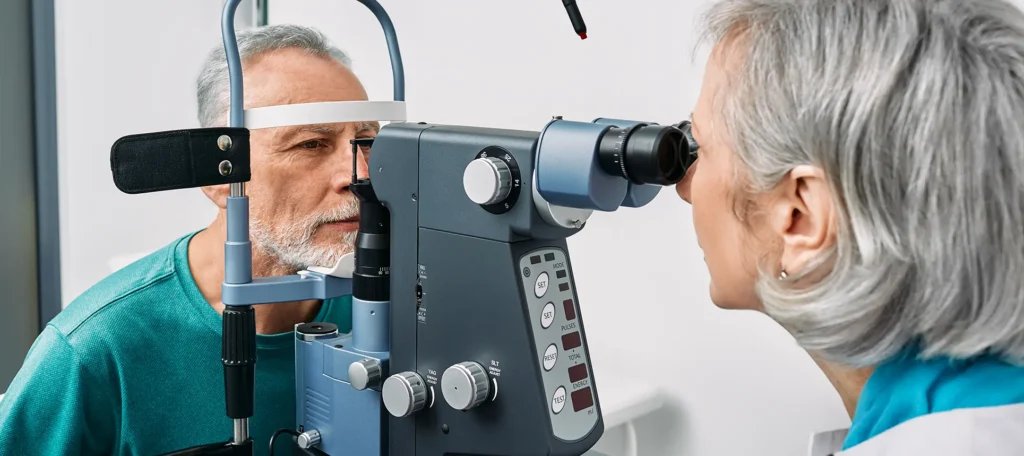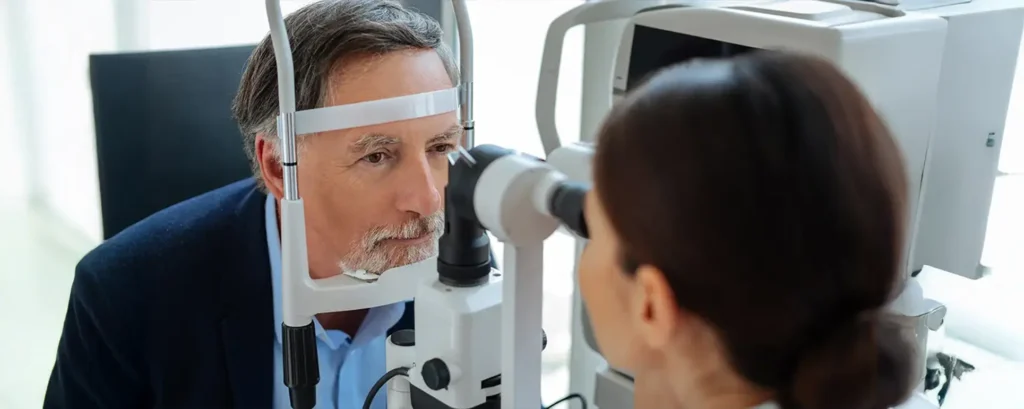If you’ve been diagnosed with Behçet’s disease and are now dealing with cataracts, you might be wondering how safe or effective surgery will be for you. You’re not alone—many patients with this complex inflammatory condition face the same uncertainty. Cataracts are common in Behçet’s disease, often triggered or accelerated by chronic inflammation or the long-term use of corticosteroids. But surgery isn’t as straightforward as it is for someone without systemic disease.
In this article, we’ll walk through everything you need to know about undergoing cataract surgery with Behçet’s disease. From managing the risks of uveitis recurrence to understanding the role of immunosuppressants and navigating timing issues—we’ll cover it all in a way that’s clear and relevant to your situation.
Understanding Behçet’s Disease and Its Ocular Impact
Behçet’s disease is a rare, chronic condition marked by systemic vasculitis—that’s inflammation of blood vessels throughout the body. It can affect the skin, joints, blood vessels, and most significantly here, the eyes.
One of the most concerning manifestations of Behçet’s is recurrent uveitis, especially posterior or panuveitis, which can damage various structures inside the eye. The inflammation can lead to a breakdown of ocular tissues, retinal damage, and ultimately visual loss if left untreated.
Over time, these recurrent bouts of inflammation or steroid use to control them can cause the lens of the eye to cloud, leading to cataract formation. That’s why cataracts are such a common issue in people living with Behçet’s.
When Is the Right Time for Cataract Surgery?
Timing is everything when it comes to cataract surgery in Behçet’s disease. Unlike in patients without inflammatory conditions, you can’t just go ahead when the cataract is “ripe”. You and your ophthalmologist need to make sure the eye is quiet—that means free of inflammation—for a sustained period before surgery is even considered.
Surgery During Quiescence
The standard recommendation is that the eye should be in a quiescent (non-inflamed) state for at least three months before operating. This is crucial because surgery itself can stir up inflammation, and if the uveitis is already active, you’re far more likely to suffer from complications postoperatively.
During this preoperative quiet phase, immunosuppressive medications may need to be adjusted. Corticosteroids might be used as a bridging therapy, but long-term management generally involves steroid-sparing agents such as azathioprine, cyclosporine, or biologics like infliximab.
The Risk of Going Too Early
Operating while inflammation is still active can lead to severe problems. You may experience a postoperative uveitis flare-up, poor wound healing, secondary glaucoma, or even cystoid macular oedema (CMO), which we’ll discuss later in more detail. So, it’s far better to wait until your eye has settled down than to risk irreversible visual damage.
Choosing the Right Immunosuppressive Strategy
Managing inflammation before and after surgery is a delicate balancing act. You want to suppress the immune system enough to prevent a flare but not so much that you increase infection risk or delay healing.
Commonly Used Agents
Some of the key immunosuppressive medications used in Behçet’s include:
- Azathioprine: Often a first-line agent, useful for long-term control of ocular inflammation.
- Cyclosporine or Tacrolimus: Calcineurin inhibitors that are particularly good for controlling posterior uveitis.
- Methotrexate: Sometimes used if azathioprine isn’t effective or tolerated.
- Biologic agents: Drugs like infliximab and adalimumab, which target TNF-α, are increasingly being used in Behçet’s-related uveitis.
These agents are usually continued throughout the perioperative period, with corticosteroids added or increased briefly around the time of surgery to keep the eye quiet.
Preoperative Planning with Your Rheumatologist
You’ll want to have close coordination between your ophthalmologist and rheumatologist in the lead-up to surgery. The medication regimen may need fine-tuning—sometimes this includes temporarily increasing the corticosteroid dose just before and after surgery (a process known as “steroid cover”).

Surgical Challenges Specific to Behçet’s Patients
Cataract surgery in Behçet’s disease isn’t technically more difficult in terms of the steps involved, but the inflammatory backdrop adds complexity.
Posterior Synechiae
Many patients have posterior synechiae—these are adhesions between the iris and the lens that form due to chronic inflammation. They can make it hard to get good pupil dilation during surgery. This might require mechanical stretching of the pupil or use of iris hooks or expansion rings.
Small Pupil and Capsule Issues
You might also have a small pupil or even fibrotic membranes over the lens capsule. These have to be handled with care to avoid damaging surrounding structures. Some surgeons also use trypan blue dye to better visualise the capsule in cases with dense cataracts and poor red reflex.
IOL Considerations
There’s ongoing debate about which type of intraocular lens (IOL) is best in Behçet’s patients. Generally, monofocal lenses are favoured over multifocal ones because they are less likely to cause visual artefacts or problems in eyes with existing macular damage. Acrylic IOLs are also preferred for their lower rates of inflammation.
The Big Concern: Cystoid Macular Oedema (CMO)
Even if the surgery goes well, one of the most common complications in Behçet’s patients is cystoid macular oedema, a buildup of fluid in the retina that can significantly blur your vision.
Why CMO Happens
CMO occurs when inflammatory mediators or surgical trauma disrupt the blood-retinal barrier. This is particularly problematic in Behçet’s because the retinal vessels are already prone to inflammation from the underlying disease.
Preventive Measures
To minimise the risk of CMO:
- Topical NSAIDs and corticosteroids are typically started before surgery and continued afterwards.
- Systemic steroids may be tapered slowly post-op instead of being stopped suddenly.
- Close monitoring with optical coherence tomography (OCT) is used to catch early signs of fluid accumulation.
In cases where CMO does occur, treatment might involve increasing corticosteroids again or adding intravitreal injections of steroids or anti-VEGF agents.
Postoperative Management: Keeping Inflammation at Bay
The days and weeks following cataract surgery in Behçet’s disease are critical. Even if the operation itself is a success, that doesn’t mean you’re in the clear.
Steroid Regimen
You’ll likely be given a tapering dose of topical steroids and NSAIDs, along with continuation of your systemic immunosuppressants. In some cases, subconjunctival steroid injections are given during surgery to extend anti-inflammatory protection.
Follow-Up Schedule
You’ll need more frequent follow-ups than a typical cataract patient—possibly every few days at first, then weekly, depending on how your eye responds. OCT scans, visual acuity checks, and slit-lamp exams will all be part of this careful monitoring.
Long-Term Visual Prognosis

Despite the challenges, most patients with Behçet’s disease can have successful cataract surgery if the eye is well-prepared and inflammation is controlled. But it’s important to set realistic expectations.
Possible Outcomes
- Visual Improvement: Many patients regain significant clarity of vision, especially if macular damage from previous inflammation is minimal.
- Complications: Some degree of macular oedema or recurrent inflammation may still occur, even with all precautions in place.
- Secondary Cataracts (PCO): Like with all cataract surgeries, posterior capsule opacification can occur, and might require a later YAG laser capsulotomy.
Your vision may not be perfect, but it can be significantly better than it was before surgery, especially in terms of glare reduction and contrast sensitivity.
1. Can Behçet’s disease cause cataracts directly?
Yes, Behçet’s disease can contribute to cataract development, although not directly in the way you might think. Cataracts in these patients are usually secondary to chronic inflammation inside the eye, or more commonly, the long-term use of corticosteroids used to control that inflammation. Both factors can accelerate the clouding of the lens.
When inflammation strikes repeatedly, it can disrupt the delicate balance within the eye, damaging the lens and hastening cataract formation. On top of that, steroid drops, tablets, or injections—while effective for controlling flare-ups—have a known side effect of promoting cataract formation when used long-term.
So, while the disease doesn’t cause cataracts in the traditional sense, its management and consequences certainly increase your risk. That’s why cataracts are so common in people with long-standing or poorly controlled Behçet’s.
2. Is cataract surgery safe if my Behçet’s disease is still active?
No, it’s not considered safe or advisable to proceed with cataract surgery during an active flare of Behçet’s-related uveitis. Operating on an inflamed eye carries a high risk of complications, including persistent inflammation, poor healing, and macular oedema.
The eye should ideally be in a stable, inflammation-free state for at least three months before surgery. This “quiescent” period reduces the risk of triggering a postoperative flare-up, which could undo the benefits of the surgery or even make your vision worse than before.
If your disease is not well controlled, your care team may adjust your medications to help settle the inflammation first. Only once the eye is stable—and likely under the continued cover of immunosuppressive therapy—can surgery be safely planned.
3. What role do immunosuppressants play around the time of surgery?
Immunosuppressive medications are crucial in managing Behçet’s disease both before and after cataract surgery. These drugs help to keep your immune system from launching attacks on the eye, which is what leads to inflammation, damage, and vision problems in the first place.
In the perioperative period (just before and after surgery), these drugs are often maintained or even temporarily increased. Your doctors might also introduce a short course of additional corticosteroids to reduce the risk of flare-ups triggered by surgical stress.
The exact medication and dose you need will depend on your specific disease pattern and previous responses to treatment. That’s why close coordination between your ophthalmologist and rheumatologist is essential—they’ll make sure your immune system is adequately suppressed without compromising your ability to heal.
4. Will I need to stop taking my regular medications before cataract surgery?
In most cases, you won’t stop your regular immunosuppressive medications before cataract surgery—if anything, they may be adjusted to strengthen inflammation control. Stopping them suddenly could increase your risk of a flare, which is exactly what you want to avoid going into surgery.
However, some drugs may be temporarily paused or doses slightly tweaked if there’s concern about delayed healing or increased infection risk. This decision is always made on a case-by-case basis, usually involving both your eye specialist and the physician managing your Behçet’s treatment.
So, don’t make any medication changes without professional guidance. It’s essential that your immune system remains stable and your eye remains calm through the surgical period, and stopping drugs without medical input could lead to unnecessary complications.
5. How does cataract surgery differ in someone with Behçet’s compared to a healthy person?
Cataract surgery itself follows the same basic steps regardless of your health status, but in Behçet’s patients, the pre- and post-op care is much more intensive. The presence of chronic inflammation, or even a history of it, makes the eye more reactive and prone to complications.
You may also have additional challenges such as small pupils, posterior synechiae (where parts of the iris stick to the lens), or cloudy corneas, all of which make the procedure more technically demanding. Surgeons need to take extra precautions—using pupil expanders, anti-inflammatory measures, or more frequent postoperative reviews.
Post-op, you’re more likely to be on a combination of topical steroids, non-steroidal drops, and possibly systemic medications. Monitoring is more frequent too, because flare-ups, macular oedema, and delayed healing are more common in eyes that have previously been inflamed.
6. Can cataract surgery make my Behçet’s worse overall?
Cataract surgery doesn’t make the underlying Behçet’s disease worse in a systemic sense, but it can provoke an eye-specific flare if not timed or managed correctly. Any trauma to the eye, including surgical trauma, can reignite the inflammatory process if the disease is not well controlled.
This is why quiescence (absence of inflammation) before surgery is so vital. If your disease is calm, your chances of postoperative complications are much lower. With proper medical cover—such as continued immunosuppression or temporary steroid boosts—these flares can often be prevented or kept mild.
If you do experience a flare-up after surgery, it’s usually manageable with swift treatment, but it may delay your recovery or affect your final visual outcome. That’s why vigilance and a proactive management plan are key.
7. Will I be able to stop my medications after cataract surgery?
Not immediately. In fact, you may need to increase or add new medications temporarily around the time of surgery to keep inflammation at bay. This might include topical drops, systemic steroids, or even injections depending on your condition and risk level.
Over time, your ophthalmologist and rheumatologist will likely aim to return you to your baseline medication regimen, but only once they’re confident your eye is stable and healing well. The process is gradual and closely monitored.
For patients with severe or longstanding Behçet’s-related uveitis, long-term maintenance therapy with immunosuppressants is often necessary even after a successful surgery. The goal isn’t to stop treatment altogether, but to keep your eyes inflammation-free for the long haul.
8. What is the risk of cystoid macular oedema after surgery?
Cystoid macular oedema (CMO) is one of the most common and frustrating complications after cataract surgery in patients with Behçet’s disease. It refers to fluid accumulating in the central part of your retina (the macula), leading to blurred or distorted vision.
Your retina may be more vulnerable to this condition because of repeated inflammation or past vascular damage from Behçet’s. Even a technically perfect surgery can trigger CMO if your immune system responds too aggressively.
To reduce the risk, your surgeon will likely start you on a combination of anti-inflammatory eye drops before and after surgery. If oedema does develop, it can usually be treated with stronger steroids, either as eye drops, oral medication, or injections near the eye.
9. Will my vision return to normal after cataract surgery?
Your vision is very likely to improve, but whether it returns to “normal” depends on several factors, including the extent of previous inflammation or damage from Behçet’s. If the retina and optic nerve are healthy, outcomes can be excellent.
That said, Behçet’s-related uveitis can sometimes leave behind scarring, macular changes, or optic nerve issues that limit full recovery. The cataract may have been only part of the problem, and removing it won’t reverse damage already done to deeper structures.
Even so, many patients report better contrast, less glare, and improved daily functioning post-surgery. And with a well-controlled disease, cataract removal can make a meaningful difference in your quality of life.
10. How can I find a surgeon experienced in Behçet’s-related eye surgery?
Look for a consultant ophthalmologist who specialises in uveitis or complex cataract surgery, often found at tertiary eye hospitals or academic centres. These surgeons will be familiar with inflammatory eye disease and the unique challenges it presents.
Ask your rheumatologist or general ophthalmologist for a referral to a uveitis specialist if you don’t already have one. Don’t be afraid to ask your surgeon how often they manage Behçet’s patients and whether they collaborate with a multidisciplinary team.
Choosing someone with direct experience in managing cataract surgery in uveitic eyes makes a big difference. They’ll know how to pre-treat inflammation, handle intraoperative issues like small pupils or synechiae, and tailor your aftercare to minimise complications.
Final Thoughts
If you’re living with Behçet’s disease and now facing cataracts, you have every reason to feel cautious—but you should also feel hopeful. With careful timing, the right immunosuppressive plan, and a surgeon experienced in uveitic eyes, the risks can be managed, and good outcomes are within reach.
The most important thing you can do is be proactive. Make sure your ophthalmologist and rheumatologist are on the same page, keep up with all medications, and don’t rush into surgery unless your eye has been calm for at least a few months.
At the London Cataract Centre, we understand the complexities of cataract surgery in patients with systemic inflammatory conditions like Behçet’s disease. Our team works closely with rheumatologists and immunologists to ensure every step of your surgical journey is carefully planned, personalised, and safe.
Cataract surgery might be more complex for you than for others, but with a tailored approach and expert care, you can still look forward to clearer days ahead.
References
- Tugal‑Tutkun, I., Ozdal, P.C., Oray, M. & Onal, S., 2017. Review for diagnostics of the year: Multimodal imaging in Behçet uveitis. Ocular Immunology and Inflammation, 25(1), pp.7–19.
Available at: https://pubmed.ncbi.nlm.nih.gov/27541278/ [Accessed 19 June 2025]. (pubmed.ncbi.nlm.nih.gov) - Tabbāra, K.F. & Chavis, P.S., 1997. Cataract extraction in Behçet’s disease. [Study on visual outcomes and complications].
Available at: https://www.researchgate.net/publication/8520874_Phacoemulsification_Cataract_Extraction_and_Intraocular_Lens_Implantation_in_Patients_With_Behcet%27s_Disease [Accessed 19 June 2025]. (researchgate.net, researchgate.net) - Ermakova, N.A. & Egorov, E.A., 2003. Cataract surgery in Behçet’s disease: outcomes of extracapsular and phacoemulsification techniques. Advances in Experimental Medicine and Biology, 513, pp. 295–300.
Available at: https://www.researchgate.net/publication/12163446_The_results_of_cataract_extraction_and_intraocular_lens_implantation_in_patients_with_Behcet%27s_disease [Accessed 19 June 2025]. (researchgate.net) - Noda, E., Yamanishi, S. & Ohashi, Y., 2009. Cataract surgery under infliximab therapy in a patient with Behçet’s disease. Journal of Ocular Pharmacology and Therapeutics, 25(5), pp.475–478.
Available at: https://www.researchgate.net/publication/51458974_Clinical_Course_before_and_after_Cataract_and_Glaucoma_Surgery_under_Systemic_Infliximab_Therapy_in_Patients_with_Behcet%27s_Disease [Accessed 19 June 2025]. (researchgate.net)

